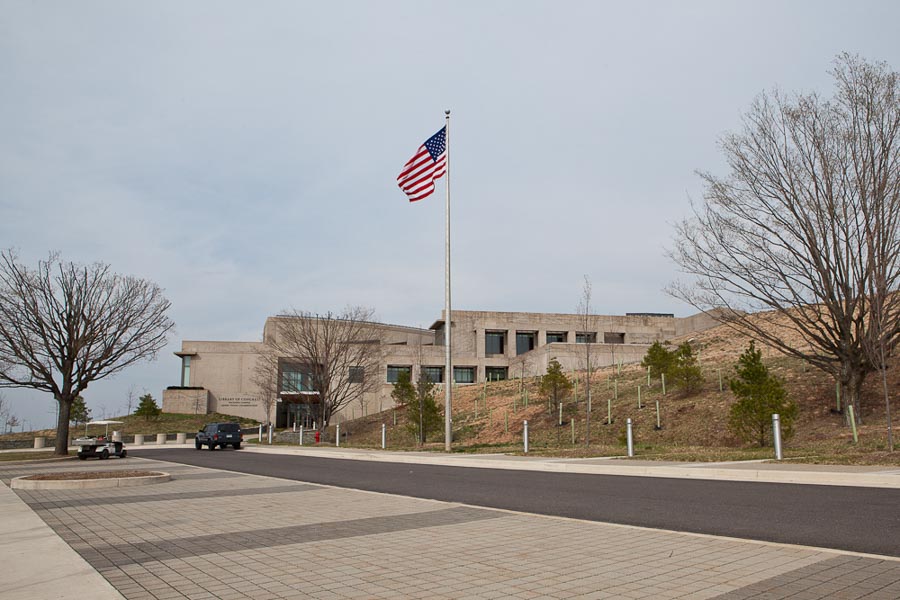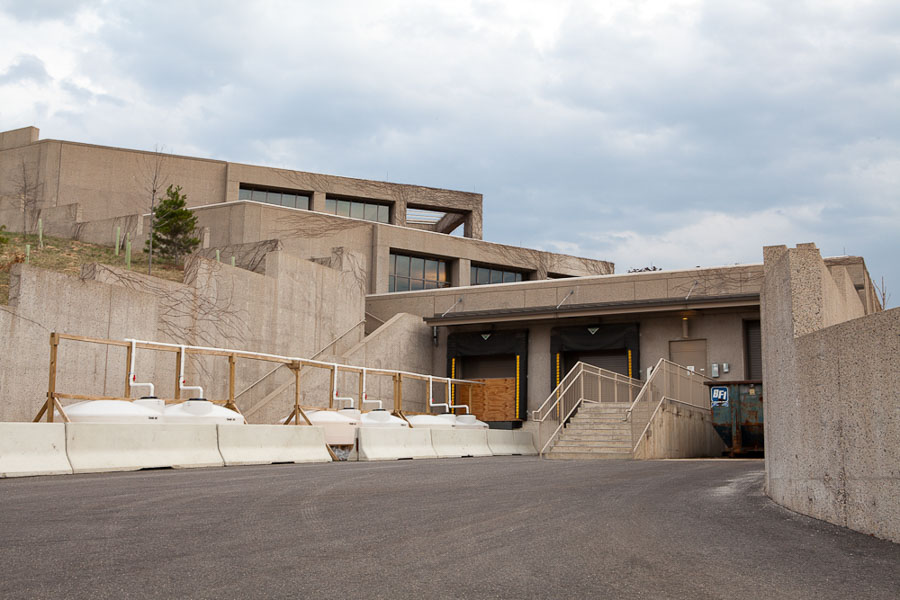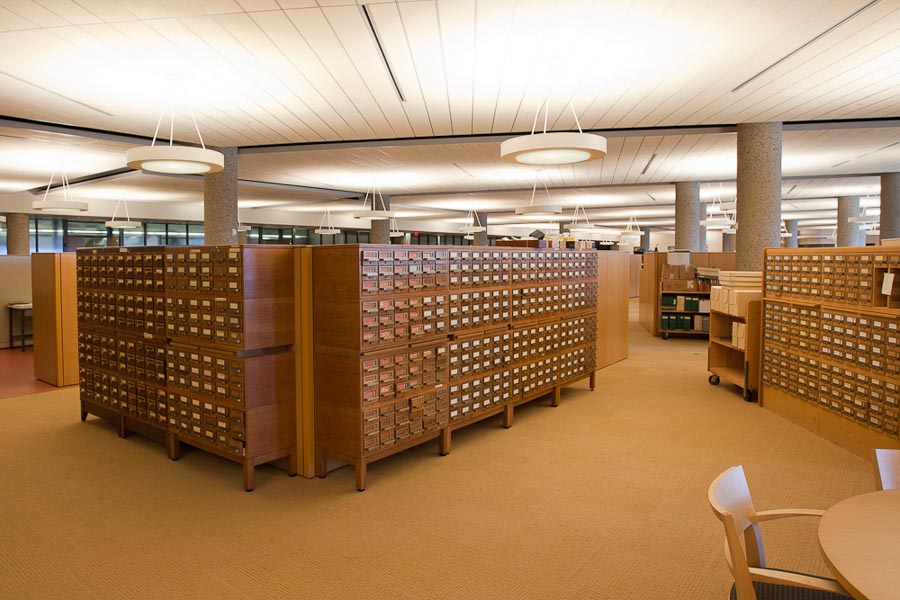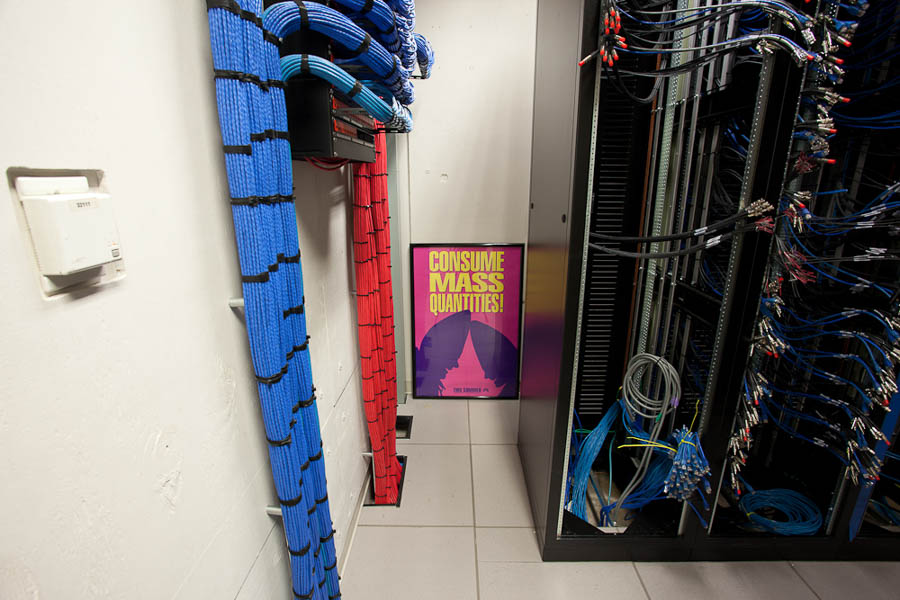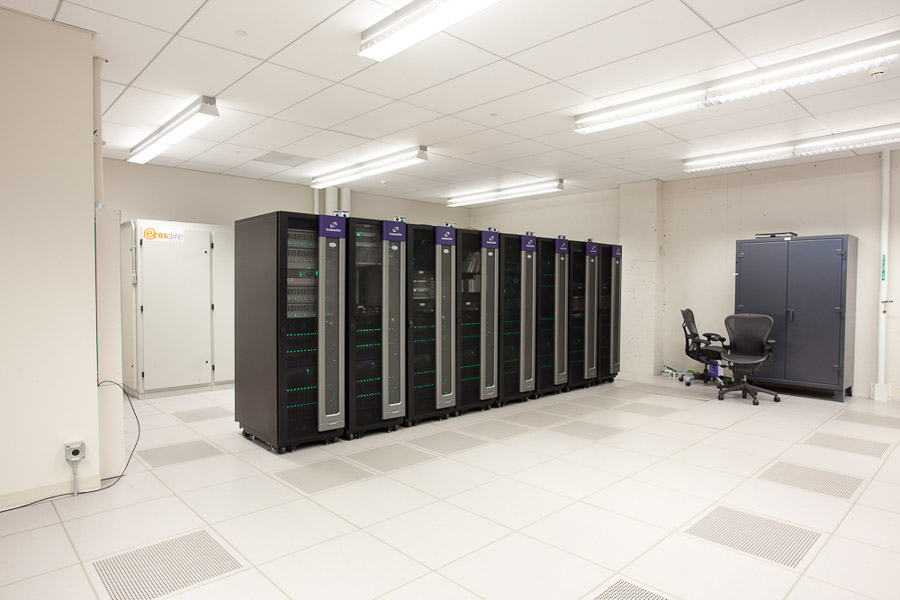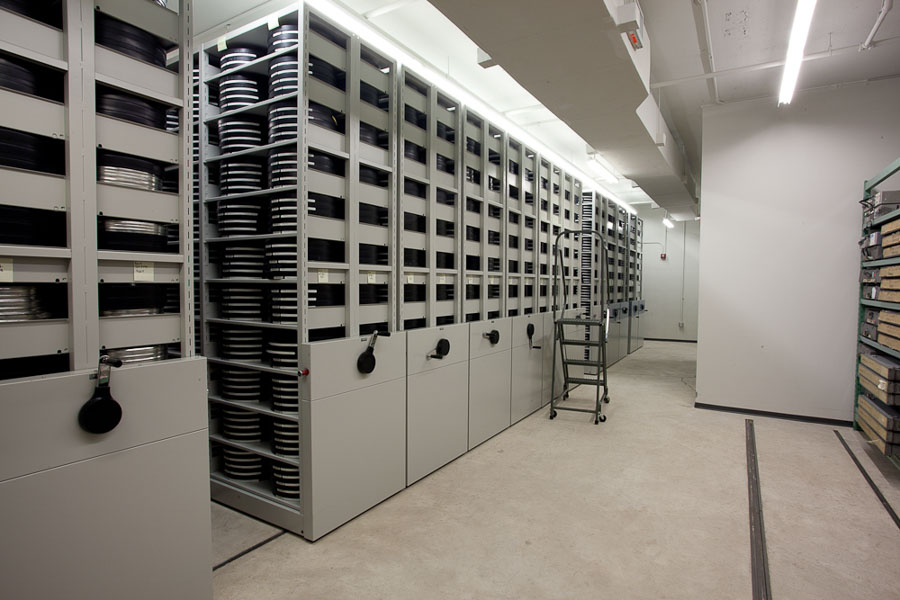Steve Rowell
The Culpeper Media Archive Bunker
2010-2011
A project about the largest media archive in the world, the National Audio-Visual Conservation Center, in a former Cold War bunker, where the entire history of media formats – from wax cylinders, LPs, 8-tracks, cassette tapes; to 8/16/35/70mm film (and more), VHS, BetaMax tapes; to floppy discs and game cards, to streaming raw satellite feeds – are being ingested, cleaned, color balanced, sonically conditioned, catalogued, archived, and digitized, in real-time, 24 hours a day.
![]()
From the 2012 issue of the CLUI Lay of the Land newsletter:
“The Culpeper facility started out as a three-level underground building built by the Federal Reserve and the Treasury Department in 1969 to house the hub of their nationwide communications network, and to store a staggering $241 billion in cash (including rows of palletized $2 bills), which would be used to jump start the economy after a nuclear attack. The site also served as a continuity of government facility, with a regular staff of 100 on hand to care for selected government officials who would flee to it in the event of nuclear war. With changes in technology, the development of new facilities, and a decrease in the perceived need for nuclear-attack proof bunkers, the Fed, which by then had a number of bunkers around the country, declared this site surplus in 1993. It was listed on the open market for a time, before being purchased and repurposed for the Library of Congress.
Knowledge, as they say, is power, and the Library of Congress is generally considered to be the largest library in the world, with over 150 million items, on hundreds of miles of shelving, in several buildings and storage areas in and around Washington DC, including this one at Culpeper, Virginia, 60 miles away.
The Library of Congress, started in 1800 as a reference library for policymakers, was initially housed in the U.S. Capitol building. After the British burned the Capitol in 1814, the library was started again with the purchase of Thomas Jefferson’s personal library of 6,847 books. As it grew, new buildings were added, starting in 1897 with the Jefferson Building, then the Adams Building (1938), and the Madison Building (1981), massive edifices next to one another, located prominently behind the U.S. Capitol Building.
The library has already outgrown these structures, and it is doubtful that another library building will be made around the Capitol. The future is in storage, and digitization. Its main off-site storage facilities are the Book Storage Module buildings at Fort Meade, Maryland (also home of the nation’s largest data processor, the NSA), where in coming years, as many as 50 million items will be stored in more than a dozen structures.
While the bulk of the library is books, audio-visual material has been collected all along as well. Since inclusion in the Library of Congress is one of the methods for establishing copyright for any kind of published material, it has been routine to send copies of new books, movies, TV shows, and audio recordings to the library on their release. The library has more than five million audio-visual recordings, and most of them are being consolidated at the converted Federal Reserve site in Culpeper, Virginia, officially known as the National Audio-Visual Conservation Center, also known as the Packard Campus.”
More at CLUI




